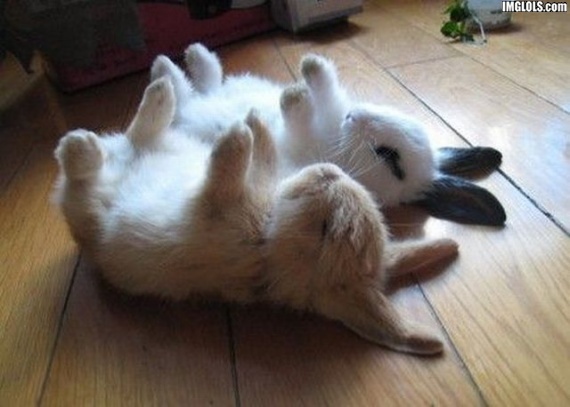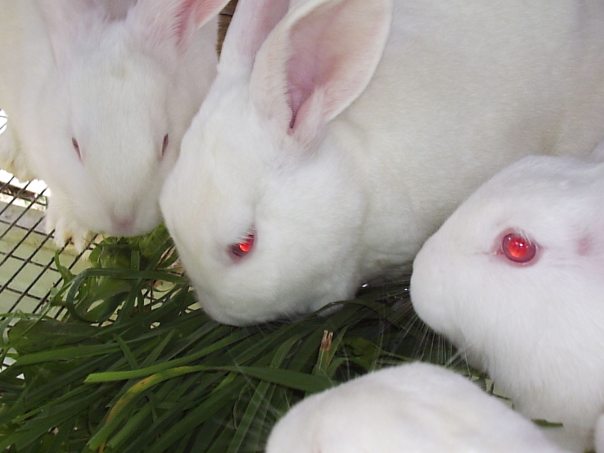Benefits of Adopting a Pet Rabbit

Continually
overrun with abandoned rabbits, local shelters and rescues are the best
place to find a new pet bunny. Not only will you save an animal from
possible euthanasia, there are also several additional benefits.
Rescues often have rabbits of varying sizes, breeds, and ages. So, if
you were looking specifically for a young, agouti mini lop, you will
most likely find a good fit at the local shelter. But, you also might
surprise yourself and fall in love with an older mixed breed rabbit once
you start looking.
Aside from the ability to choose from a wide selection of different
kinds of rabbits, adopting from a shelter or rescue is also very
convenient. Volunteers at rescues take the time to acclimate rabbits to
living in apartments and houses. In this way, the time you would have to
take to train the rabbit is cut down considerably.
For example, volunteers will
litter box train the rabbits
as they come in, so although a rabbit may take a little while to adjust
to living in a new home, you will not need to litter train your new
bunny from scratch.
Furthermore, because a lot of rescued rabbits live in foster homes,
many are accustomed to living in households with children and other
pets.
So if your household situation is similar, adopting a rabbit who
is already comfortable in that environment makes the transition easier
for both you and the rabbit.
If you were interested in having multiple pet rabbits, you may be
able to adopt a bonded pair or trio. This saves you the time and effort
of
bonding the rabbits
yourself. Adopting a bonded pair or trio is ideal if you work full time
because the rabbits can entertain each other while you’re gone.
In addition to saving a lot of time and effort, adopting a rabbit
from a rescue also saves you money on vet bills. Rabbit rescues usually
have partnerships with local vets, and rabbits will be
spayed or neutered
upon reaching sexual maturity. So you can adopt a rabbit after he or
she has recovered from the surgery and not have to worry about paying
for the procedure.

Moreover,
some rabbits suffer from health conditions of varying severity. One
common affliction is malocclusion, a condition where the rabbit’s teeth
are not aligned properly and the rabbit is unable to wear down his/her
teeth.
When you adopt from a rescue, all the rabbits will be checked for
malocclusion as well as other afflictions. They will then be properly
treated.
If the rabbit has an chronic health issue, the rescue will alert
potential new parents of the condition, so only those willing and able
to care for the bunny can adopt him/her. If you purchase a rabbit from a
breeder or pet store, they may not alert you to any pre-existing health
problems.
Finally, rescue volunteers are very knowledgeable. Before leaving you
on your own with your new companion, they will make sure you know how
to properly care for your bunny. Understanding the
behavior and
needs of your rabbit will be essential to creating a
rewarding, long-term relationship.
From http://myhouserabbit.com/new-to-rabbits/benefits-of-adopting-a-pet-rabbit/
.














 But
the base of a bunny food pyramid actually isn’t filled by pellets. The
most important ingredient to a healthy bunny’s diet is hay. Fresh hay should be provided to rabbits at all times so they can graze when they please. (See the real
But
the base of a bunny food pyramid actually isn’t filled by pellets. The
most important ingredient to a healthy bunny’s diet is hay. Fresh hay should be provided to rabbits at all times so they can graze when they please. (See the real 















